
This article was printed in the
Autumn 2019 issue of Chic Compass Magazine.
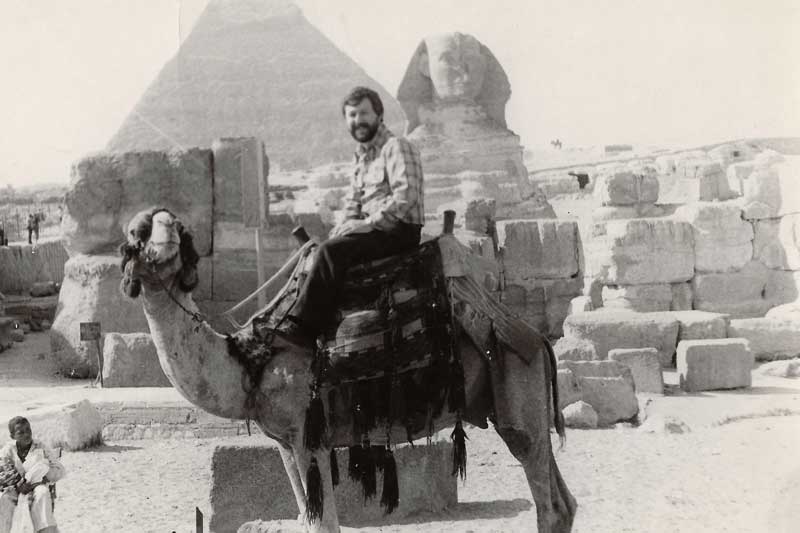
Richard’s first trip to the Great Pyramid, 1977
The Nile: 5,000 Years of Culture and History
BY RICHARD STEARNS
The year was 1977 and “Tutmania” had swept across America. The travelling exhibit of the young Egyptian King, Tutankhamen, was all the rage and tickets to the exhibit were sold out in every city.
I happened to be in Chicago at the same time as the exhibit and I attempted to get tickets. However, they were sold out for the next three months and it was impossible to get in. I just decided that rather than try to get into a travelling exhibit I would just go to Egypt someday and see the real thing. Eight months later, I flew into Cairo and began a journey that would forever fill my imagination with the wonders of a long gone, but never forgotten, civilization. I bent down very low and almost crawled into the very center of the Great Pyramid. I visited the entire Tutankhamen exhibit at the Cairo Museum. It contained more than 5,000 artifacts, 100 times more than the travelling exhibit that came through the United States. I spent one week there and left knowing that I had to return someday and learn even more about this fascinating culture.
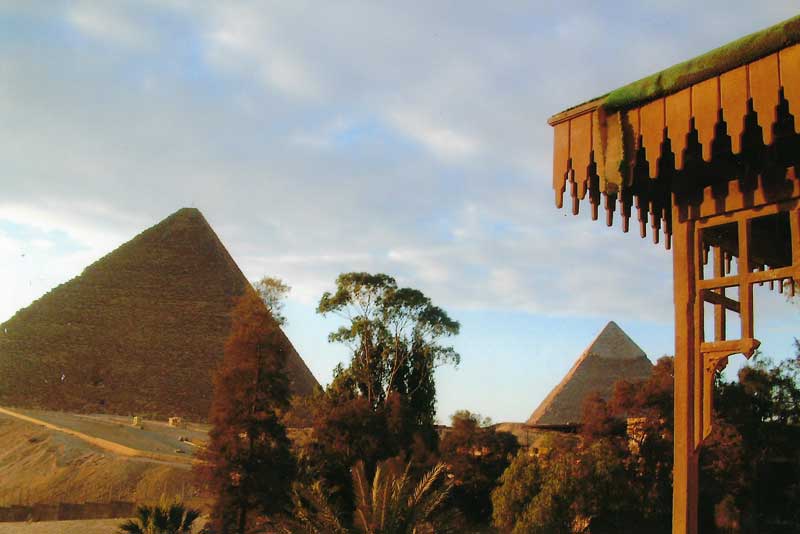
Mena House Hotel
Fast forward to 2006 and I am making plans, with my husband, Graham, to return to Egypt. This trip includes three historic hotels and a river cruise down the Nile. Each day will take us deep into the history of this ancient country. We arrive in Cairo and our guide, Medhat, is waiting for us. He takes us to the first historic hotel, Mena House. It is located right across the street from the Great Pyramids of Giza and as we opened the shutters in our room, they stood right outside our window. As we unpacked our bags and got settled in, I kept looking out the window. What a magnificent sight!!! Some of the guests to occupy this magnificent hotel include Sir Arthur Conan Doyle (Creator of Sherlock Holmes), Winston Churchill, Agatha Christie, Frank Sinatra, Charlie Chaplin and a host of others. We had truly arrived, and our journey was just beginning.
The next morning our guide met us in the lobby, and we were off for our first full day of touring and exploration. Our first stop is Saqqara, the necropolis of the Old Kingdom of pharaoh’s around 3100 B.C. It is a sprawling complex of temples, pyramids and funerary monuments. The largest of these is the Step Pyramid. Archaeologists consider this to be the first pyramid ever built. It dates back to the 27th Century B.C. and is more than 200 feet tall. It was built as the tomb for King Zoser. Additionally, it is the oldest stone structure of its size in the world. As we wander through the other tombs and buildings in Saqqara, we see some incredibly preserved murals that depict and provide insights into everyday life of Ancient Egypt.
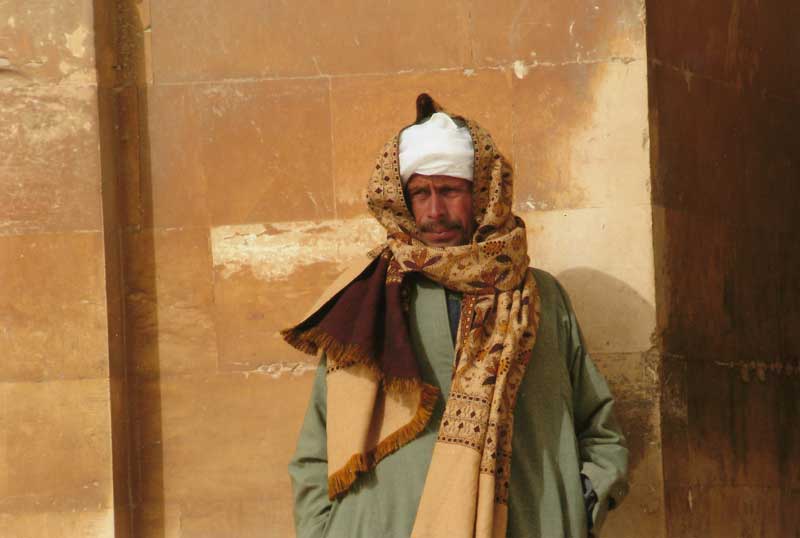
Security guard at Saqqar
After a quick lunch, we proceed north, and we are dropped off just a short distance from the Sphinx. The Sphinx has long been the source of stories, myths and fables. The mammoth statue faces the rising sun. In Arabic, it’s called, Abu al-Hol or “Father of Terror.” It has been carved almost entirely from one piece of limestone. Napoleon Bonaparte saw only the head of the Sphinx when he arrived in Egypt in 1798. The rest of it was still buried deep beneath the sands. In the distance, you can see the Great Pyramids of Giza as they become a backdrop for this amazing and mysterious statue.
As we made our way towards the Pyramids, we can begin to see exactly why one of them has earned the name “Great.” The Pyramid of Cheops, the largest pyramid, stands 450 feet above the desert floor. It was built around 2600 B.C. using construction methods that still confound modern day scholars. As I stand at the bottom and look up, I am dwarfed by the sheer immensity of this massive stone construct. Its entire purpose was to be the tomb for one man and it boggles my mind. It is said that “All things fear time but time fears the pyramids.” Nearby, a recently unearthed ancient boat has been reconstructed from all its original materials. Perfectly preserved by the dry sand that covered it, the cedarwood planking, oars, ropes (woven from halfa grass), wooden dowels and battens were all there. Interestingly, not a single nail was included. Its purpose was to carry the pharaoh’s mummy across the Nile to Memphis for the funerary rites.
That evening, after dinner, we returned to the Sphinx for a light and sound show that is something no one should ever miss. The music, the story, the presentation and the history behind this show is worth every moment. What a way to end the day.
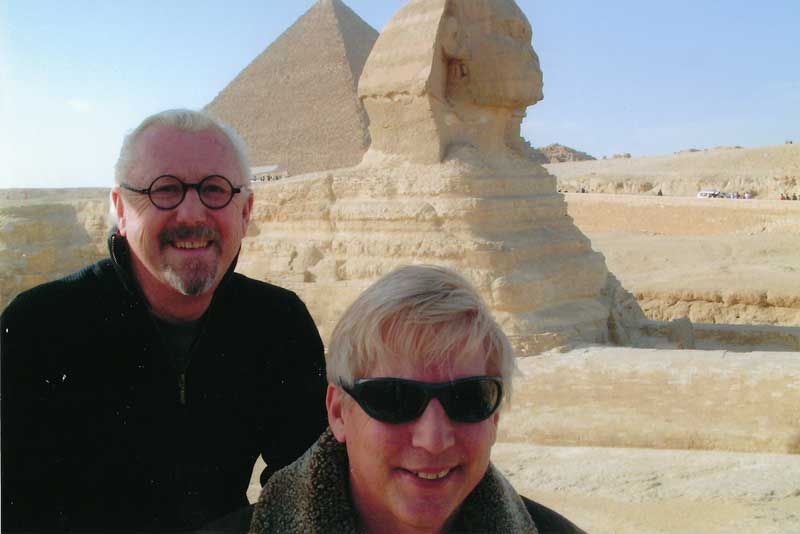
Richard and Graham at The Sphinx
Our next stop, Aswan, is home to the mighty High Dam that spans the Nile River far to the south of Cairo. We are staying in the historic Old Cataract Hotel. This is the very hotel that Agatha Christie wrote her novel “Death on the Nile” in. She always stayed in Suite 1202. We are able to stay in a Suite just down the hall in 1209. The name of the hotel restaurant is “1902.” We dress and go down for dinner. The restaurant is magnificent, and we were told that Agatha Christie had a favorite table where she could sit and watch everything that went on while she dined. I asked the Maitre d’ if that table would be available and with a nod of his head he takes us there and seats us.
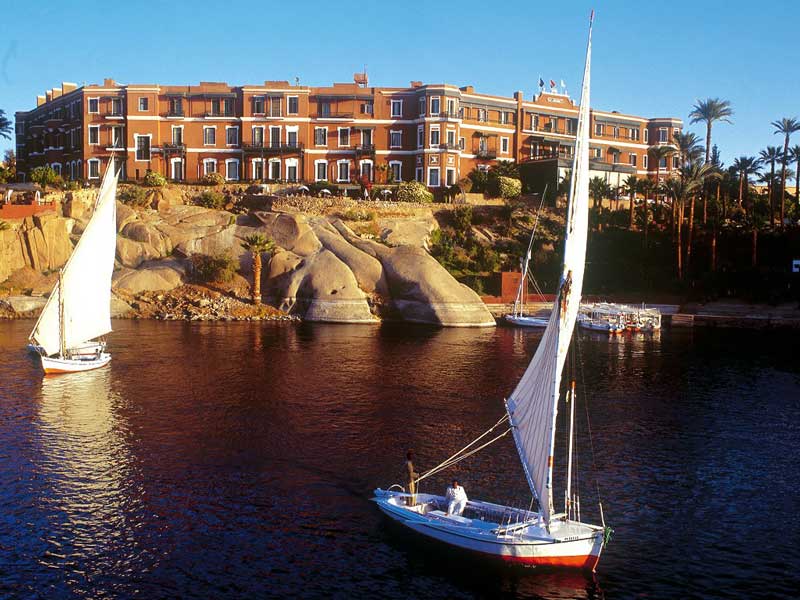
Old Cataract Hotel in Aswan
Early the next morning, we hop onto an airplane for a very short flight to Abu Simbel, a temple that was built by Pharaoh Ramses II as a tribute to himself and his wife, Queen Nefertari. This temple would have been one of the first casualties of the new High Dam. Thanks to a group of international specialists, they carved the temple into 1036 blocks weighing 11 tons each. With the help of 25,000 workers the blocks were moved 200 feet up the cliff and reconstructed safely above the water levels of Lake Nasser. I am fascinated not only with this incredible temple built by an ancient pharaoh, but by the technological wizardry that saved it and was able to keep it in its exact original condition.
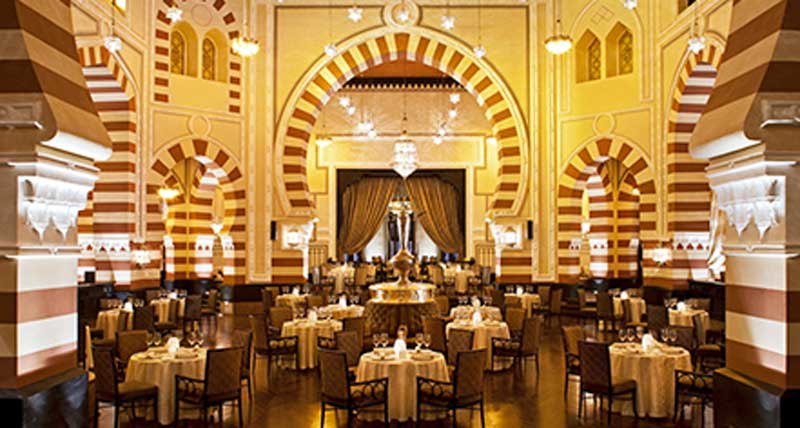
Restaurant 1902
As evening approaches our guide takes us to the Philae Temple of Isis. The temple features courtyards flanked by granite lions and walls covered with depictions of ancient gods and goddesses. The island’s most recognizable sight is Trajan’s Kiosk with its 14 majestic stone pillars. It is said that Cleopatra would travel to this Temple every year and bathe in the presence of Isis. Wandering through the temple and the kiosk as the sun sets over the Nile River is simply fascinating. This is a UNESCO Heritage site that was also rescued between 1972 and 1980. A team of international technicians moved the entire temple and its outlying buildings from the original island which was about to be entirely covered with rising water from the new High Dam to a nearby island which was high enough to withstand the flood waters. Each piece was moved and reassembled exactly on the new island.
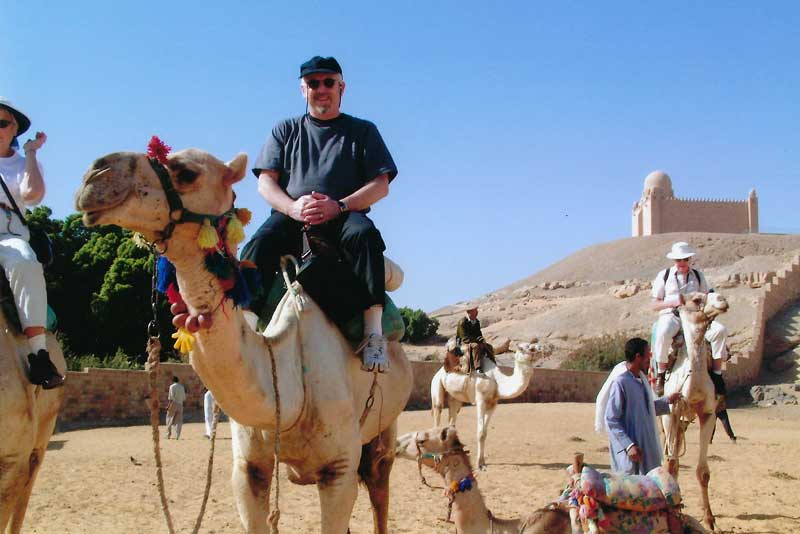
Camel Safari to Monastery
The next morning is a real surprise as our guide greets us with camels. My camel was named Rambo. We climb up on them and start out into the desert. Our destination is the old Monastery of St. Simeon. Built in the 6th Century it sits in the middle of the desert and is one of the best preserved early Christian sites in all of Egypt. As an additional treat our guide takes us, and our camels, down to a Nubian village where we are given tea in the home of one of the locals.
We checked out of our hotel and boarded our cruise ship which was docked on the banks of the Nile River. This would be our home for the next four days. As the gangplank was pulled up and we got underway I took one last look at Aswan and the adventures I had enjoyed there. Our ship was called the “Royal Orchid” and the crew couldn’t have been friendlier or more accommodating to our needs. As we drift down the Nile, I can see all human history going by. The visuals are conflicting as I observe a farmer drawing water out of the Nile by hand while a modern automobile drives by. There is a farmer ploughing his field with his mule and a commercial jet taking off above his head. The 21st Century is trying to get a foothold, but it hasn’t quite grasped all of this ancient country quite yet.
Our first stop is Kom Ombo. Directly in front of me, as I disembark, is a Greco-Roman Temple. Its placement is very dramatic right on the bank of the Nile. It is Egypt’s only double temple. One side is dedicated to the crocodile god, Sobek. The other side is dedicated to the falcon god, Horus. The entire building is perfectly symmetrical along its main axis, twin entrances, twin courts and twin colonnades.
As we exit the temple, Graham glances a clothing shop just a few doors away. Graham tells me to follow and we head in the direction he is pointing. There is a costume ball on the last night of our cruise and we are supposed to dress in native Egyptian attire for the party. The shop has galabeyas (a type of full-length robe that you pull over your head to wear), head gear and vests. Graham is ready to buy what he needs and enjoy but I resist. “I’m not a costume kind of guy! I haven’t worn a costume since my Mother dressed me up as the scarecrow on the Yellow Brick Road.”, I protest. Needless to say, Graham has the shopkeeper pick out some things in my size and I reluctantly try them on. Satisfied that our clothing is perfect for the occasion, Graham pays the shopkeeper and we take our bags back to the ship.

Costume Party Onboard Royal Orchid
The next few days were filled with more and more local Nile life, history and fascination as we worked our way slowly towards our final destination on this wonderful water journey through history, Luxor. But first, the costume ball was fast approaching. It was a British tradition that has been passed down. And I, whether I liked it or not, was about to become an unwilling participant. As Graham dragged me back to our stateroom to change into our costumes, I could only shake my head and wonder how I got myself into this. I put my costume on, checked myself in the mirror and proceeded to the Dining Room. Everyone in the Dining Room was in costume. We fit right in with the other guests. Waiters walked around with drinks on trays. A band was playing traditional music. A conga line formed that wound through the different levels of the ship. And, yes, I had fun. In fact, that costume ball was one of my best memories.
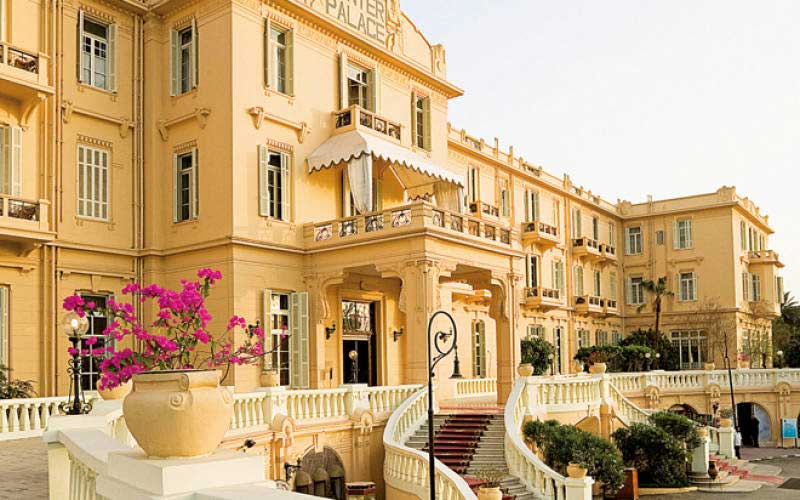
Winter Palace in Luxor
The next morning, we disembarked from our ship for the last time. We had arrived in Luxor and, once again, we were in a place that reeked of history. Our guide quickly escorted us to another very historic hotel, the Winter Palace. The room looked out over the Nile River from our balcony. I ordered a bottle of wine and some snacks from room service and we sat on the balcony, watching the felucca’s sail up and down while the sun set before us.
I was up long before the sunrise and on my way to a huge field filled with hot air balloons. In the dark, each one of them had an otherworldly glow as their gas flames filled them and prepared them for flight. My guide walked me over to the balloon and told me to climb into the basket.
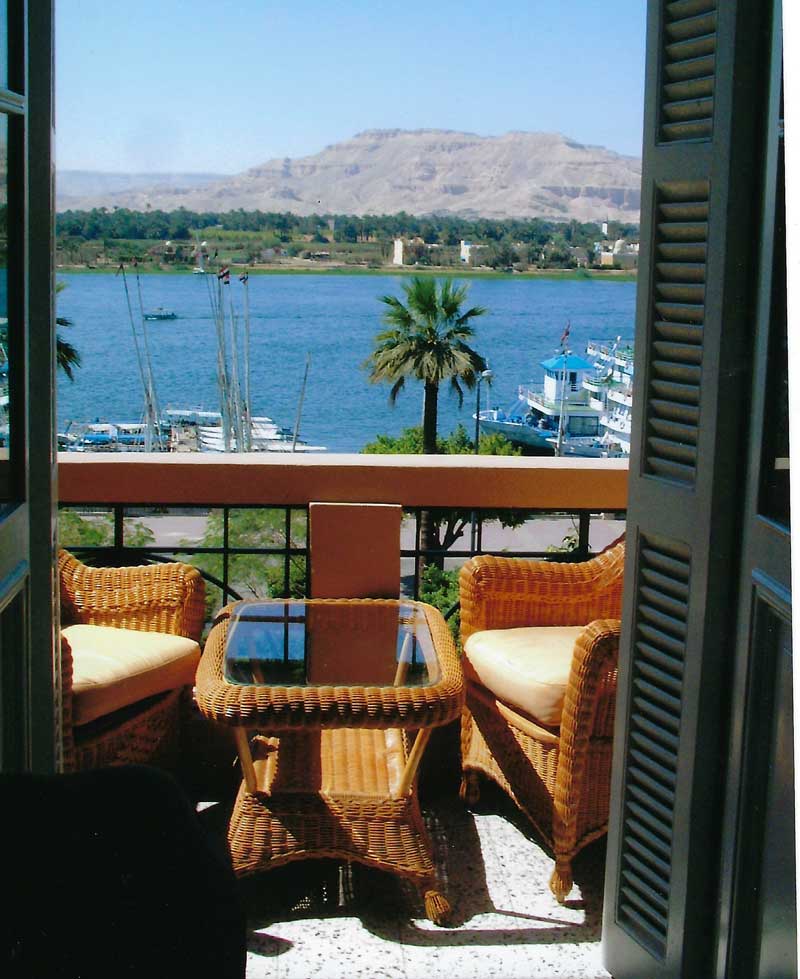
Nile River From Our Room in the Winter Palace
The pilot instructed the grounds men to release the lines and we started to drift up into the dark sky. There was a bright spot on the eastern horizon and dawn would be peeking its way onto the sky very soon. I looked all around us. Everything was so quiet and we sailed through the sky at the hands of the expert pilot. As the sky began to brighten and the sun rose above the horizon, our guide pointed down to what appeared to be a very small village. He told us that this was the Howard Carter stayed while he was looking for the tomb of King Tutankhamen. As we drifted along, we were suddenly over the Valley of the Kings. Located below us were the tombs of dozens of pharaohs from thousands of years in the past. I am in total awe of everything I am able to see before me. All too soon, I notice that the ground is coming up towards us and there are people below watching us as we descend. As we get close to the earth, the grounds men grab the lines and secure them pulling us so we sit flat on the ground. The only word that comes out of my mouth is “WOW!!”
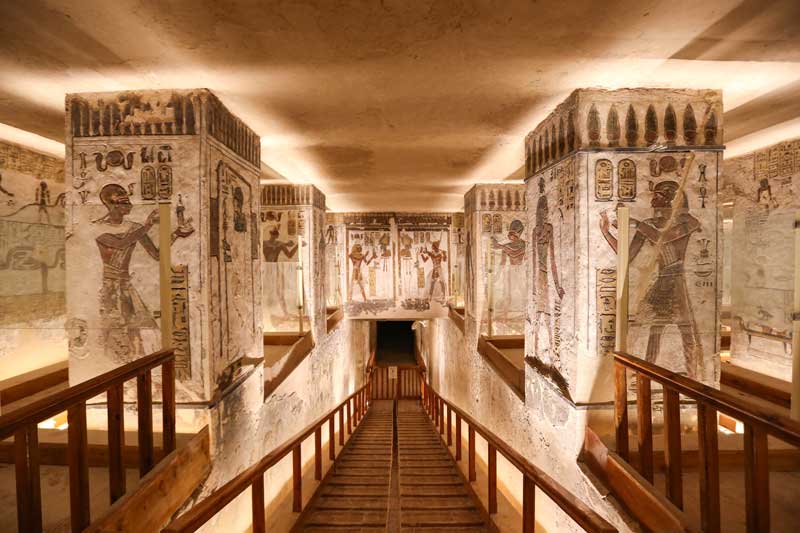
Tomb in the Valley of the Kings, Egypt
But my day isn’t even close to being done. My guide escorts me to a mini bus and we start to drive over to the Valley of the Kings. After watching it from above, I will actually get to walk through the valley and visit the tombs in person. As I was walking towards the entrance I can see people moving across the entire valley. Archeologists, students, historians and tourists are everywhere. The entire valley is a beehive of activity and I find myself caught up in it. My first priority is to visit King Tutankhamen’s tomb. It is small and cramped for a pharaoh’s tomb. All the treasures have been removed to the museum in Cairo. The only visible item in the empty rooms is the sarcophagus. King Tut is the only pharaoh who’s mummified body still remains in the Valley of the Kings.
As I exit the tomb and look across the way, I see what appears to be television cameras and lights set up and ready to start filming. Apparently, a new tomb has been found and no one knows what is in it yet. They are waiting for the lead archeologist and the Director of Egyptian Antiquities to arrive. I stand around and watch all of the people going back and forth. As one of them walks past me, I ask what is going on. He explains that they are about to open a newly discovered tomb, but no one knows what it contains. We can see antiquities being raised from the entrance. What were they? Thanks to the television cameras and the Discovery Channel, I was able to come home and watch the whole thing about six months later.
The next morning was going to be another pre-dawn experience. “Oh Please, another coffee. I’m NOT a morning person.” My guide was waiting for me in the lobby of the hotel and it was still pitch-black outside. As we walked down to the edge of the river there was a brightly lit felucca moored to the hotel’s dock. The guide helped me climb aboard and soon we were on our way crossing the Nile in the blackness of night. As we got to the other side and disembarked, I saw a great tent full of colors and open to the clear sky above. The smell of fresh bread baking in mud brick ovens made my mouth water. Our guide had arranged for us to have breakfast and watch the sunrise. Indeed, as we looked out while drinking freshly brewed espresso, we could see the sky brightening and the bright light of the sun as it began to rise over the majestic Nile River. I completely forgot about the meal in front of me and just watched one of the most beautiful sunrises I had ever seen. Truly Magnificent!!!

Sunrise Over the Nile
After the amazing tented breakfast, we head for the Temple of Karnak. The ancient Egyptians called this “the most perfect of places.” It is a tribute to the god Amun-Re and was continuously expanded for millennia by successive kings and queens who wanted to add their own tributes. As I walk through the Hall of Pillars, I am amazed at just how large this enclosure truly is. The tallest obelisk in Egypt is located here. It is made from a single piece of pink granite and was raised by Queen Hatshepsut to honor Amun-Re. It stands almost 100 feet tall. I sit close to the base and look up at it in awe.
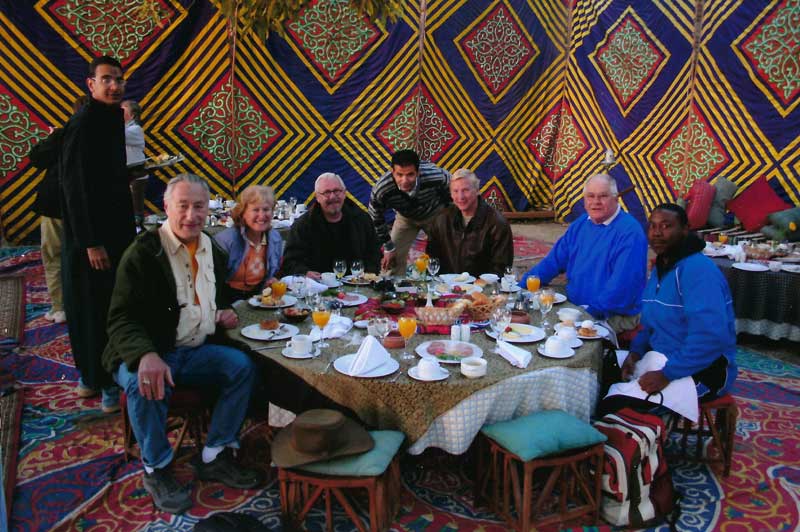
Tented Breakfast on the Nile River Bank (Our guide, Medhat, is in the middle)
On our last night in Luxor our guide has one more surprise for us. A horse drawn carriage pulls up in front of us. The edge of the canvas top is covered with small bells that jingle as the carriage moves along. Our carriage driver told us, with a smile, that while they were filming “Death on the Nile” he actually had Bette Davis and Maggie Smith ride with him in the same carriage. As our ride takes us through the streets, we find ourselves in the Night Market. Due to the extreme daytime temperatures in Egypt, most locals prefer to go out in the evening after the sun has gone down. These huge markets have expanded to cover dozens of city blocks in the center of the city and they open up at sunset. They are brightly lit with the vendors standing out in front beckoning you into their shops. The smell of spices and herbs permeates the air and the colors are a kaleidoscope as we gallop past. The sights, smells and chatter along with the chimes of our own carriage are a sensory knockout. Finally, the carriage comes to a stop in front of a small coffee shop. Our guide invites us to partake of a beverage, but I choose to go back into the market and shop on foot for just a little while longer. I truly don’t want to leave this place.
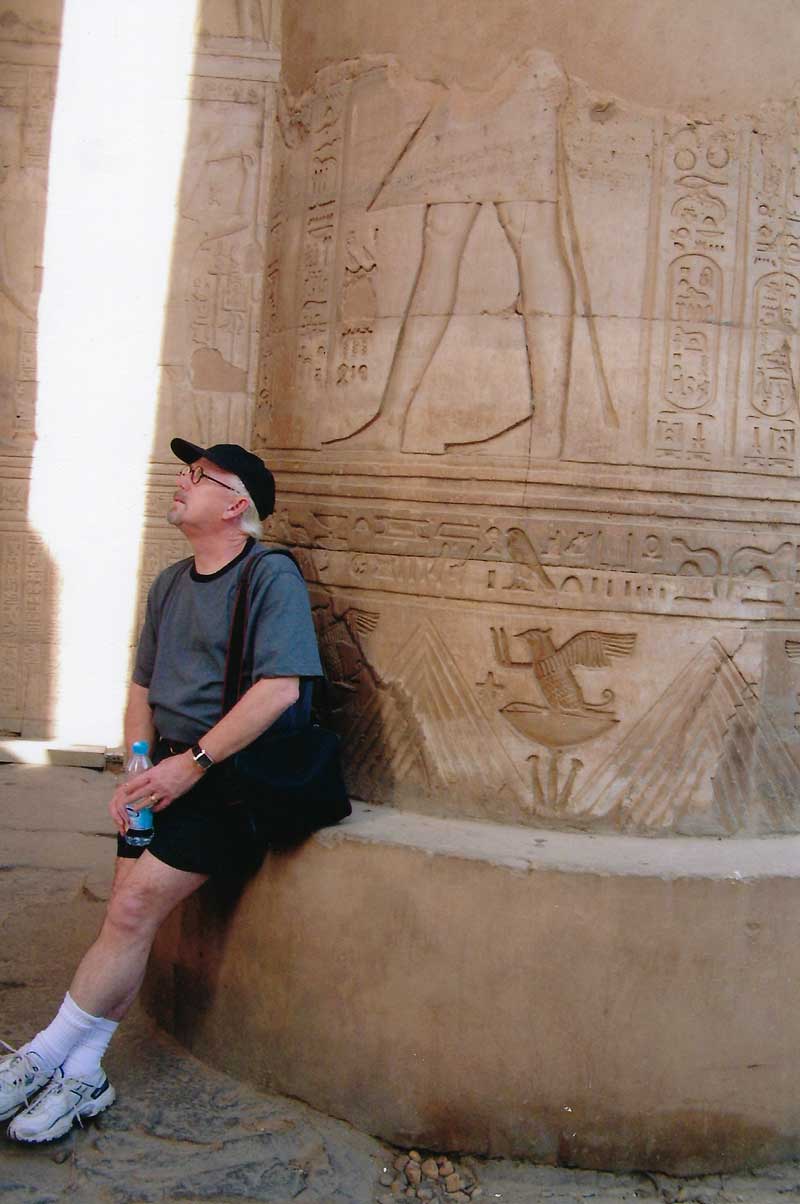
Pillars of the Temple of Karnak
We head back to Cairo for our last full day in Egypt. I ask our guide to take us to the “Cairo Bazaar,” in the Old City that is filled with shops, restaurants and artisans selling their wares. As we wander through this gigantic maze, I am happy we have our guide. I would never be able to navigate through this place on my own and find my way back out of it. For the next several hours I am in a shopper’s heaven. I go from a silversmith, to a pottery shop, to a jeweler and, finally stopping for a break, we go to the famous Café Fishawi located in the middle of the bazaar. In the middle of this cacophony of noise, the coffee shop is quiet, calm and peaceful. It starts to sink in that my trip has come to an end and I will be departing first thing in the morning. It is with a heavy heart and a great deal of reluctance that I head back to the hotel and pack my bags.
Will I ever go back? I hope so…..YES, I will!!!
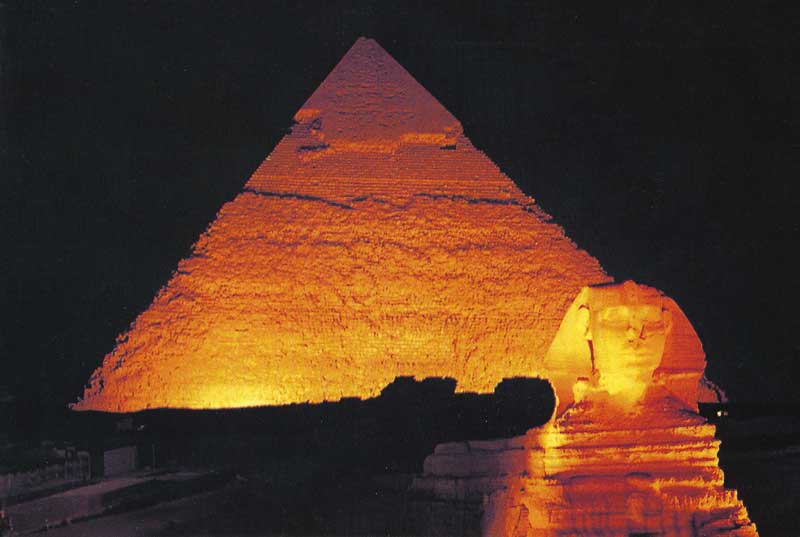
Light and Sound Show with the Sphinx and Pyramids
